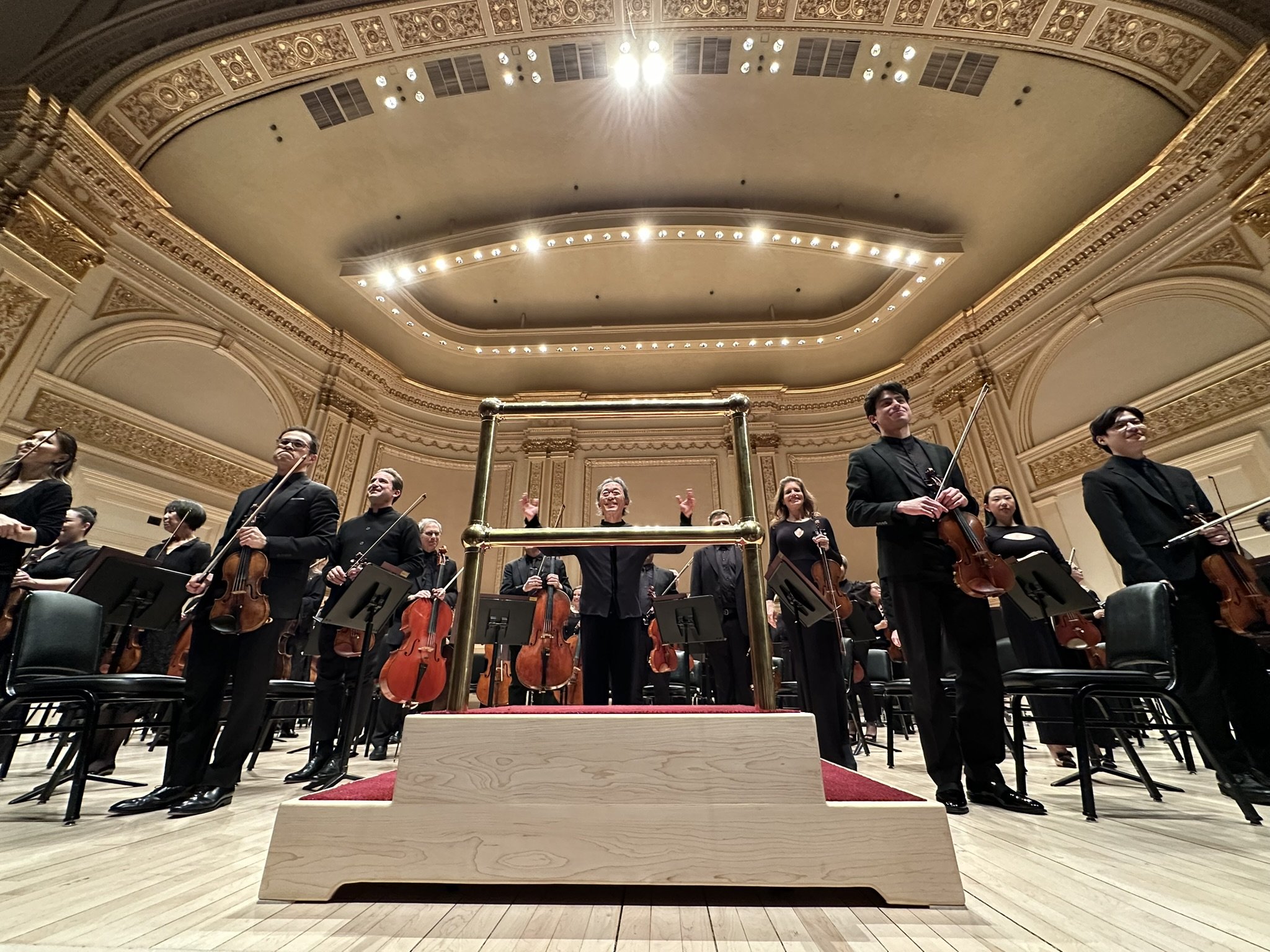The Metropolitan Opera Orchestra performed Brahms' Symphony No. 4 at Carnegie Hall. Brahms, who studied history and collected the music of his great predecessors, wrote his fourth and final symphony at the age of 52 and premiered it in 1885. Brahms's secret is that he applied his predecessors' techniques and wisdom to express romanticism. When Wagner was perfecting tonality, many people considered Brahms' music antique, as if someone says, "70's rock is old. Now electro." Similar tone width comes and goes from the beginning, and the strings and wind instruments are played out of sync. You hear the strings in the beginning, but if you dare to follow only the wind instruments, you will see a different kind of fun. If you change your perspective, you will discover various things and enjoy tones' complex patterns and blends. His scores contain medieval melodies and patterns, but Brahms is still frequently performed in modern concerts because the more times it is performed, the more interpretations emerge and the more fascinating the performers are. Conductor Myung-Whung Chung was quiet. The musicians who usually go into the pit were lined up on the stage. You could hear each member singing, even though you can't see them in front of the stage at an opera house. The violins, in particular, are hidden by the wall that separates the pit from the audience.
You could even see their expressions on the Carnegie stage as they sang. When the scattered musical patterns began to move in one direction, their vectors were unified, and the energy of the music was abundantly expressed with a wonderfully stable tempo. Myung-Hun occasionally changed the tempo, shaking them intensely. The Met Orchestra continued to play, clinging to him and not letting go. The fourth movement was a Chaconne. The pattern was repeated many times, and it was a juggling of sounds with various instruments mixed. The Brahms performed by the Met Orchestra, which does not perform operas, made me feel closer to them.
1.30.2025
Myung-Whun Chung, Conductor
Maxim Vengerov, Violin
Program
ALL-BRAHMS PROGRAM
Violin Concerto
Symphony No 4
メトロポリタン歌劇場管弦楽団(The Metropolitan Opera Orchestra)はカーネギーホールでブラームスの交響曲第4番を演奏した。歴史を学び、偉大な先人たちの音楽を集めたブラームスは、52歳で最後の交響曲第4番を書き、1885年に初演した。ブラームスの秘密は、先人たちの技法と知恵を応用してロマン主義を表現したことだ。ワーグナーが調性を完成させていた頃、ブラームスの音楽をアンティークとみなす人が多かった。まるで「70年代のロックは古い。今はエレクトロ」と言っているかのようだ。冒頭から同じような音幅が行ったり来たりし、弦楽器と管楽器は同期せずに演奏される。最初は弦楽器が聞こえるが、あえて管楽器だけを追ってみると、また違った面白さが見えてくる。視点を変えると、さまざまな発見があり、音色の複雑なパターンやブレンドを楽しむことができる。彼の楽譜には中世の旋律やパターンが盛り込まれているが、ブラームスは演奏を重ねるほどに解釈が生まれ、演奏者も魅力的であるため、現代のコンサートでも頻繁に演奏されている。指揮者のチョン・ミョンフンは静かだった。普段はピットに入る演奏者たちがステージ上に並んでいる。オペラハウスのステージ前では見えなくても、メンバー一人一人がそれぞれよく歌っている。特にバイオリンはピットと客席を隔てる壁に隠れている。カーネギーのステージでは、彼らが歌う表情まで見えた。ばらばらだった音楽パターンが一方向に動き出すと、ベクトルが統一され、素晴らしく安定したテンポで音楽のエネルギーが豊かに表現された。ミョンフンは時折テンポを変え、激しく揺さぶった。メトロポリタン管弦楽団はくらいついて離れず演奏を続ける。第4楽章はシャコンヌだった。パターンが何度も繰り返され、さまざまな楽器が混ざり合った音のジャグリング。オペラを演奏しないメトロポリタン歌劇場管弦楽団をより身近に感じた。

